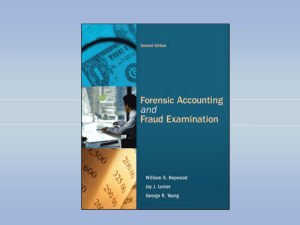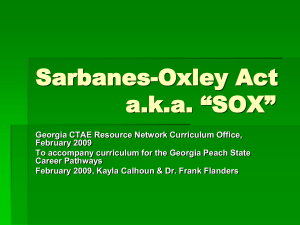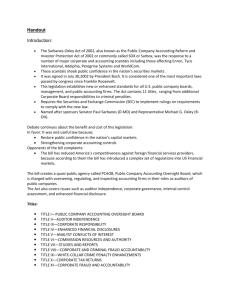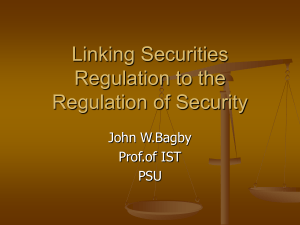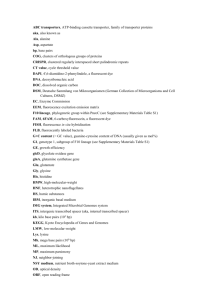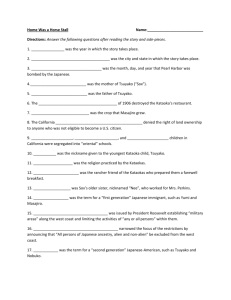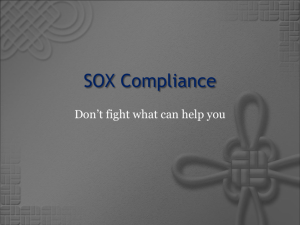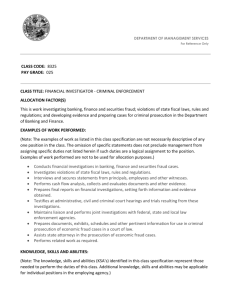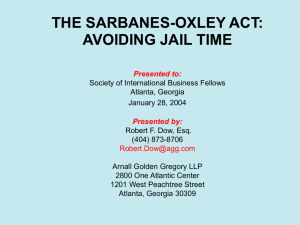Sarbanes-Oxley (SOX) How should your company respond
advertisement
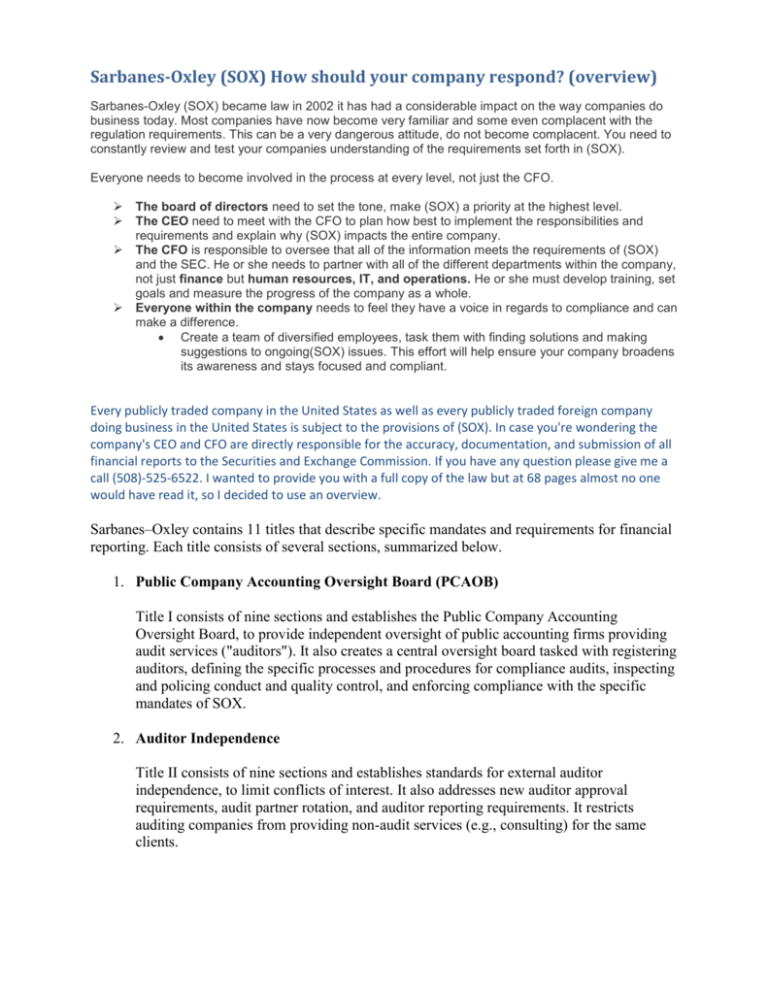
Sarbanes-Oxley (SOX) How should your company respond? (overview) Sarbanes-Oxley (SOX) became law in 2002 it has had a considerable impact on the way companies do business today. Most companies have now become very familiar and some even complacent with the regulation requirements. This can be a very dangerous attitude, do not become complacent. You need to constantly review and test your companies understanding of the requirements set forth in (SOX). Everyone needs to become involved in the process at every level, not just the CFO. The board of directors need to set the tone, make (SOX) a priority at the highest level. The CEO need to meet with the CFO to plan how best to implement the responsibilities and requirements and explain why (SOX) impacts the entire company. The CFO is responsible to oversee that all of the information meets the requirements of (SOX) and the SEC. He or she needs to partner with all of the different departments within the company, not just finance but human resources, IT, and operations. He or she must develop training, set goals and measure the progress of the company as a whole. Everyone within the company needs to feel they have a voice in regards to compliance and can make a difference. Create a team of diversified employees, task them with finding solutions and making suggestions to ongoing(SOX) issues. This effort will help ensure your company broadens its awareness and stays focused and compliant. Every publicly traded company in the United States as well as every publicly traded foreign company doing business in the United States is subject to the provisions of (SOX). In case you're wondering the company's CEO and CFO are directly responsible for the accuracy, documentation, and submission of all financial reports to the Securities and Exchange Commission. If you have any question please give me a call (508)-525-6522. I wanted to provide you with a full copy of the law but at 68 pages almost no one would have read it, so I decided to use an overview. Sarbanes–Oxley contains 11 titles that describe specific mandates and requirements for financial reporting. Each title consists of several sections, summarized below. 1. Public Company Accounting Oversight Board (PCAOB) Title I consists of nine sections and establishes the Public Company Accounting Oversight Board, to provide independent oversight of public accounting firms providing audit services ("auditors"). It also creates a central oversight board tasked with registering auditors, defining the specific processes and procedures for compliance audits, inspecting and policing conduct and quality control, and enforcing compliance with the specific mandates of SOX. 2. Auditor Independence Title II consists of nine sections and establishes standards for external auditor independence, to limit conflicts of interest. It also addresses new auditor approval requirements, audit partner rotation, and auditor reporting requirements. It restricts auditing companies from providing non-audit services (e.g., consulting) for the same clients. 3. Corporate Responsibility Title III consists of eight sections and mandates that senior executives take individual responsibility for the accuracy and completeness of corporate financial reports. It defines the interaction of external auditors and corporate audit committees, and specifies the responsibility of corporate officers for the accuracy and validity of corporate financial reports. It enumerates specific limits on the behaviors of corporate officers and describes specific forfeitures of benefits and civil penalties for non-compliance. For example, Section 302 requires that the company's "principal officers" (typically the Chief Executive Officer and Chief Financial Officer) certify and approve the integrity of their company financial reports quarterly.[4] 4. Enhanced Financial Disclosures Title IV consists of nine sections. It describes enhanced reporting requirements for financial transactions, including off-balance-sheet transactions, pro-forma figures and stock transactions of corporate officers. It requires internal controls for assuring the accuracy of financial reports and disclosures, and mandates both audits and reports on those controls. It also requires timely reporting of material changes in financial condition and specific enhanced reviews by the SEC or its agents of corporate reports. 5. Analyst Conflicts of Interest Title V consists of only one section, which includes measures designed to help restore investor confidence in the reporting of securities analysts. It defines the codes of conduct for securities analysts and requires disclosure of knowable conflicts of interest. 6. Commission Resources and Authority Title VI consists of four sections and defines practices to restore investor confidence in securities analysts. It also defines the SEC’s authority to censure or bar securities professionals from practice and defines conditions under which a person can be barred from practicing as a broker, advisor, or dealer. 7. Studies and Reports Title VII consists of five sections and requires the Comptroller General and the SEC to perform various studies and report their findings. Studies and reports include the effects of consolidation of public accounting firms, the role of credit rating agencies in the operation of securities markets, securities violations and enforcement actions, and whether investment banks assisted Enron, Global Crossing and others to manipulate earnings and obfuscate true financial conditions. 8. Corporate and Criminal Fraud Accountability Title VIII consists of seven sections and is also referred to as the “Corporate and Criminal Fraud Accountability Act of 2002”. It describes specific criminal penalties for manipulation, destruction or alteration of financial records or other interference with investigations, while providing certain protections for whistle-blowers. 9. White Collar Crime Penalty Enhancement Title IX consists of six sections. This section is also called the “White Collar Crime Penalty Enhancement Act of 2002.” This section increases the criminal penalties associated with white-collar crimes and conspiracies. It recommends stronger sentencing guidelines and specifically adds failure to certify corporate financial reports as a criminal offense. 10. Corporate Tax Returns Title X consists of one section. Section 1001 states that the Chief Executive Officer should sign the company tax return. 11. Corporate Fraud Accountability Title XI consists of seven sections. Section 1101 recommends a name for this title as “Corporate Fraud Accountability Act of 2002”. It identifies corporate fraud and records tampering as criminal offenses and joins those offenses to specific penalties. It also revises sentencing guidelines and strengthens their penalties. This enables the SEC to resort to temporarily freezing transactions or payments that have been deemed "large" or "unusual". (overview provided by Wikipedia)
